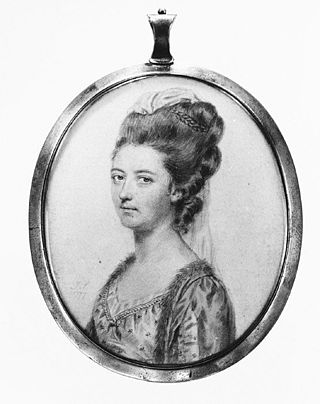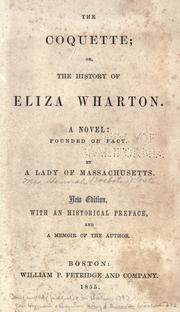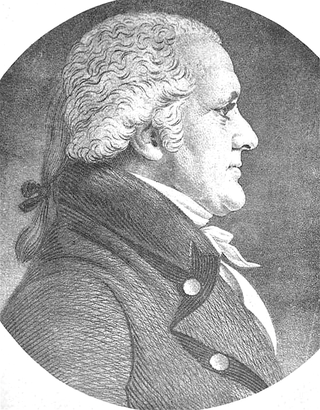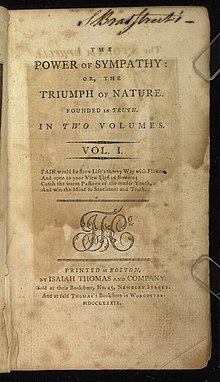
Uncle Tom's Cabin; or, Life Among the Lowly is an anti-slavery novel by American author Harriet Beecher Stowe. Published in two volumes in 1852, the novel had a profound effect on attitudes toward African Americans and slavery in the U.S., and is said to have "helped lay the groundwork for the [American] Civil War".

American literature is literature written or produced in the United States of America and in the colonies that preceded it. The American literary tradition thus is part of the broader tradition of English-language literature, but also includes literature of other traditions produced in the United States and in other immigrant languages. Furthermore, a rich tradition of oral storytelling exists amongst Native American tribes.

The History of the Adventures of Joseph Andrews and of his Friend Mr. Abraham Adams, was the first full-length novel by the English author Henry Fielding to be published and among the early novels in the English language. Appearing in 1742 and defined by Fielding as a "comic epic poem in prose", it tells of a good-natured footman's adventures on the road home from London with his friend and mentor, the absent-minded parson Abraham Adams.

Charlotte Lennox, néeRamsay, was a Scottish novelist, playwright, poet, translator, essayist, and magazine editor, who has primarily been remembered as the author of The Female Quixote, and for her association with Samuel Johnson, Joshua Reynolds and Samuel Richardson. However, she had a long, productive career in her own right.
Hannah Webster Foster was an American novelist.

The Coquette or, The History of Eliza Wharton is an epistolary novel by Hannah Webster Foster. It was published anonymously in 1797, and did not appear under the author's real name until 1856, 16 years after Foster's death. It was one of the best-selling novels of its time and was reprinted eight times between 1824 and 1828. A fictionalized account of the much-publicized death of a socially elite Connecticut woman after giving birth to a stillborn, illegitimate child at a roadside tavern, Foster's novel highlights the social conditions that lead to the downfall of an otherwise well-educated and socially adept woman.

Clotel; or, The President's Daughter: A Narrative of Slave Life in the United States is an 1853 novel by United States author and playwright William Wells Brown about Clotel and her sister, fictional slave daughters of Thomas Jefferson. Brown, who escaped from slavery in 1834 at the age of 20, published the book in London. He was staying after a lecture tour to evade possible recapture due to the 1850 Fugitive Slave Act. Set in the early nineteenth century, it is considered the first novel published by an African American and is set in the United States. Three additional versions were published through 1867.

William Hill Brown was an American novelist, the author of what is usually considered the first American novel, The Power of Sympathy (1789), and "Harriot, or the Domestic Reconciliation", as well as the serial essay "The Reformer", published in Isaiah Thomas' Massachusetts Magazine.
The sentimental novel or the novel of sensibility is an 18th-century literary genre which celebrates the emotional and intellectual concepts of sentiment, sentimentalism, and sensibility. Sentimentalism, which is to be distinguished from sensibility, was a fashion in both poetry and prose fiction beginning in the eighteenth century in reaction to the rationalism of the Augustan Age.

Pamela; or, Virtue Rewarded is an epistolary novel first published in 1740 by English writer Samuel Richardson. Considered one of the first true English novels, it serves as Richardson's version of conduct literature about marriage. Pamela tells the story of a fifteen-year-old maidservant named Pamela Andrews, whose employer, Mr. B, a wealthy landowner, makes unwanted and inappropriate advances towards her after the death of his mother. Pamela strives to reconcile her strong religious training with her desire for the approval of her employer in a series of letters and, later in the novel, journal entries all addressed to her impoverished parents. After various unsuccessful attempts at seduction, a series of sexual assaults, and an extended period of kidnapping, the rakish Mr. B eventually reforms and makes Pamela a sincere proposal of marriage. In the novel's second part Pamela marries Mr. B and tries to acclimatise to her new position in upper-class society. The full title, Pamela; or, Virtue Rewarded, makes plain Richardson's moral purpose. A best-seller of its time, Pamela was widely read but was also criticised for its perceived licentiousness and disregard for class barriers. Furthermore, Pamela was an early commentary on domestic violence and brought into question the dynamic line between male aggression and a contemporary view of love. Moreover, Pamela, despite the controversies, was able to shed light on social issues that transcended the novel for the time such as gender roles, early false-imprisonment, and class barriers present in the eighteenth century. The action of the novel is told through letters and journal entries from Pamela to her parents. Richardson highlights a theme of naivety, illustrated through the eyes of Pamela. Richardson paints Pamela herself as innocent and meek to further contribute to the theme of her being short-sighted to emphasize the ideas of childhood innocence and naivety.
The Romance of Lust, or Early Experiences is a Victorian erotic novel written anonymously in four volumes during the years 1873–1876 and published by William Lazenby. Henry Spencer Ashbee discusses this novel in one of his bibliographies of erotic literature. In addition the compilers of British Museum General Catalogue of Printed Books list this book.

Charlotte Temple is a novel by British-American author Susanna Rowson, originally published in England in 1791 under the title Charlotte, A Tale of Truth. It tells the story of a schoolgirl, Charlotte Temple, who is seduced by a British officer and brought to America, where she is abandoned, pregnant, sick and in poverty. The first American edition was published in 1794 and the novel became a bestseller. It has gone through over 200 American editions. Late in life, the author wrote a sequel that was published posthumously.

Sarah Wentworth Apthorp Morton was an American poet.
Eliza Parsons was an English Gothic novelist, best known for The Castle of Wolfenbach (1793) and The Mysterious Warning (1796). These are two of the seven Gothic titles recommended as reading by a character in Jane Austen's novel Northanger Abbey.

Perez Morton was a lawyer and revolutionary patriot in Boston, Massachusetts.

Charles Apthorp (1698–1758) was a merchant and slave trader in Boston, colonial Massachusetts. Apthorp managed his import business from Merchants Row, and "in his day he was called the richest man in Boston." He also served in the employ of the British government for various schemes it attempted to implement in North America.

The Female Quixote; or, The Adventures of Arabella is a novel written by Charlotte Lennox imitating and parodying the ideas of Miguel de Cervantes' Don Quixote. Published in 1752, two years after she wrote her first novel, The Life of Harriot Stuart, it was her best-known and most-celebrated work. It was approved by both Henry Fielding and Samuel Richardson, applauded by Samuel Johnson, and used as a model by Jane Austen for Northanger Abbey. It has been called a burlesque, "satirical harlequinade", and a depiction of the real power of females. While some dismissed Arabella as a coquette who simply used romance as a tool, Scott Paul Gordon said that she "exercises immense power without any consciousness of doing so". Norma Clarke has ranked it with Clarissa, Tom Jones and Roderick Random as one of the "defining texts in the development of the novel in the eighteenth century".
Human rights literature is a literary genre that deals with human rights issues, and thus - directly or indirectly - promotes values of human rights. The goal of human rights literature is to combine the literary driving force with the motivation for action, which is a fundamental and integral element of the struggle for protection of human rights. This literary genre is based on the concept of "Engaged Literature" that was articulated by the French writer and philosopher Jean-Paul Sartre.

Forced seduction is a theme found frequently in Western literature wherein man-on-woman rape eventually turns into a genuine love affair. A popular example is Luke and Laura from the American soap opera General Hospital.
Lucinda; or, The Mountain Mourner is an epistolary novel by P. D. Manvill (1764–1849), first published in 1807. A bestseller at the time, it was widely distributed and went through numerous editions.














